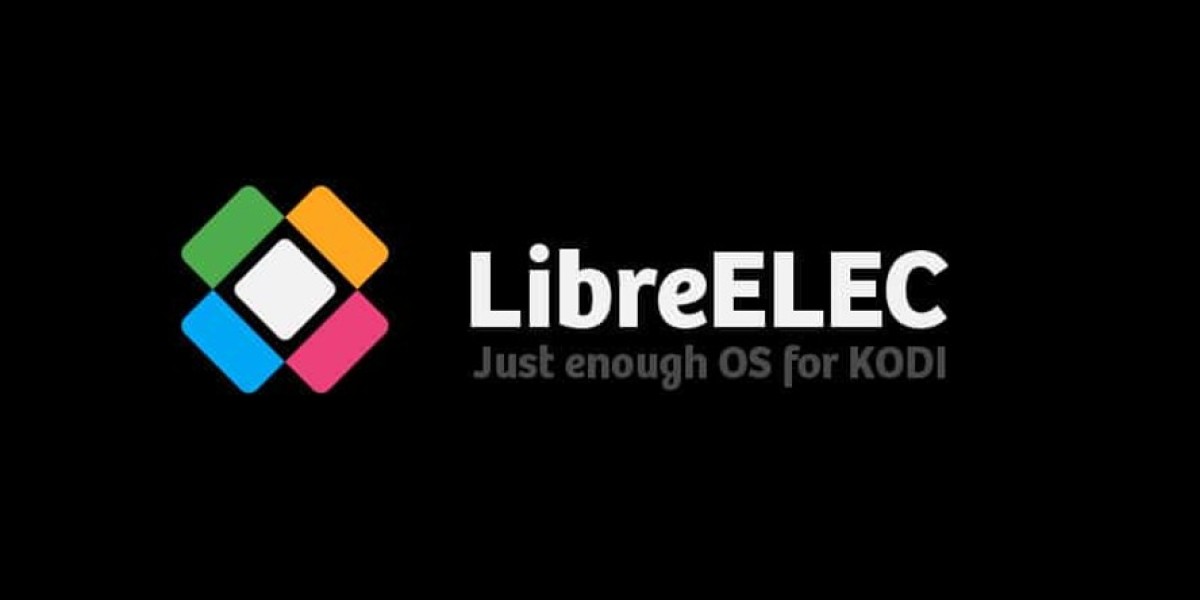Plex vs. Kodi Comparison
When it comes to streaming and managing your media, the primary decision often boils down to choosing between Plex and Kodi. Both platforms have their unique advantages, and users tend to be quite passionate about their preferred choice.
I've been using both for a while, and I aim to provide insights that can help you decide which one is best suited for your needs.
Understanding Plex and Kodi
Plex is a comprehensive media server that allows you to stream movies, TV shows, and music across various devices, including TVs, computers, mobiles, and streaming boxes. It offers robust library management, with support for metadata and advanced features like real-time video and audio conversion. Plex is compatible with a wide range of devices, such as Roku, Apple TV, Amazon Fire TV, and more. It also has dedicated apps for Android and iOS. While the basic version is free, a subscription unlocks additional premium features.
Kodi, on the other hand, is an open-source media player that runs on multiple devices, including TVs, computers, and mobiles. It is highly customizable and supports a vast array of addons, or software plugins, which allow you to stream content from the internet or play downloaded media. The latest version of Kodi (17.5) can be downloaded from their official site, and it is entirely free.
Safety Considerations
Whether you're using Plex or Kodi, it's crucial to protect your online activities. Many users opt for a Virtual Private Network (VPN) to keep their connection secure and private. ISPs are increasingly throttling bandwidth for media downloads or charging extra for better performance. A VPN helps mask your online activities, making it difficult for ISPs to monitor how you use your connection.
Moreover, hackers are becoming more sophisticated, using man-in-the-middle attacks to intercept and steal data from your streams. Choosing the right VPN is essential. After testing several top-tier services, we recommend IPVanish. It offers a fast, responsive, and secure connection with numerous servers worldwide. IPVanish also bypasses geographic content restrictions and keeps no logs of your streaming activities.
Media Playback and Transcoding
Both Plex and Kodi excel in playing videos and music on various devices, supporting a wide range of formats and outputting in HD and 4K. The key difference lies in how they handle file format conversion, known as transcoding. Plex is known for its on-the-fly transcoding capabilities, which automatically convert media files to a format compatible with your device, ensuring smooth playback. Kodi, while capable, requires more manual setup for transcoding, but it offers greater flexibility and control.
By considering these aspects, you can make an informed decision on whether Plex or Kodi is the right fit for your streaming needs.
When it comes to converting video or audio files into a different format in real-time, this process is known as transcoding. It's particularly useful for ensuring smooth playback on various streaming devices, some of which are equipped with specialized chipsets that handle specific file formats more efficiently. This results in seamless navigation through movies and high-quality audio playback through premium speaker systems.
From my perspective, Plex excels in its transcoding capabilities. The software leverages hardware acceleration on the server side, which means that even if your CPU isn't the fastest, Plex can still transcode media smoothly. This ensures that you won't experience interruptions like buffering or lag, whether you're streaming to a TV or a mobile device.
Media organization approaches define these platforms' core identities
Plex centralizes your collection, automatically distributing content across linked devices
Kodi keeps libraries localized unless manually configured for network sharing
Transcoding capabilities reveal another layer of divergence
Plex's automated conversion adapts files for diverse player requirements during streaming
Kodi's format support is extensive but rigid, sometimes necessitating third-party converters like Handbrake
Ideal deployment scenarios emerge from these fundamental differences
Single-screen home theaters often thrive with Kodi's focused interface and HDMI connectivity
Multi-device households benefit from Plex's cloud-like accessibility across phones, tablets, and smart TVs
Architectural philosophies shape their best applications
Kodi excels as a customizable hub for dedicated media playback stations
Plex shines as a unified distribution system for nomadic viewers and multi-room setups
Neither platform remains confined to these primary strengths however
Advanced users can extend Kodi's reach through network add-ons and shared databases
Plex simultaneously functions effectively as a powerful single-device media organizer
The choice ultimately hinges on whether priority lies with centralized access or localized control
Content portability battles against customization depth in this streaming software faceoff
When organizing your digital media collection, metadata plays a crucial role in transforming raw files into a polished streaming experience.
Both platforms pull details like titles, descriptions, and artwork to create visually rich interfaces reminiscent of modern streaming services.
Plex leverages premium databases for near-flawless metadata accuracy, including studio-approved visuals and detailed cast lists, while Kodi relies on community-driven sources that occasionally require manual adjustments.
The distinction between these tools becomes clearer in their architecture.
Kodi functions as a local powerhouse, ideal for direct playback on devices like TVs via HDMI-connected hardware.
Its flexibility allows advanced users to enable multi-device streaming through network protocols or MySQL setups, though these features demand technical configuration.
Plex adopts a client-server model, prioritizing seamless access across devices – whether you’re at home or remotely accessing your library through mobile apps or web browsers.
Setup complexity further separates the two.
Plex offers a plug-and-play approach with automatic device detection and remote access capabilities.
Kodi rewards tinkerers with deeper customization but expects users to handle firewall settings, shared folders, and metadata scraping configurations independently.
Your choice ultimately hinges on whether you prioritize simplicity and cross-device convenience (Plex) or granular control over a localized entertainment hub (Kodi).
Plex vs. Kodi: A Comparison
When it comes to handling large media libraries, Plex outshines Kodi. On my Plex server, I manage a vast collection consisting of tens of thousands of songs and thousands of albums. The interface is smooth, and album covers are displayed instantly as you scroll. In contrast, Kodi tends to be more sluggish and sometimes freezes for a few moments while browsing through the library.
In the realm of library management, Plex emerges as the superior option. However, Kodi's strength lies in its customization capabilities. If you have the technical know-how and patience to set up a SQL database to store all your media, Kodi can match Plex's performance. Achieving this level of functionality in Kodi, though, is significantly more challenging compared to the seamless experience Plex offers right out of the box.
Plex boasts an impressive compatibility with a wide range of streaming devices, including Windows, Mac, Android, and iOS. It is not only compatible but also available as official releases in all major app stores, making installation a breeze.
Kodi, on the other hand, faces some challenges due to its association with piracy. For example, it is not listed in the Amazon Fire app store and must be manually installed on Fire Stick and Fire TV devices. The same applies to Apple TV, iOS devices, and Roku. While it is possible to install Kodi on these platforms, the process is more cumbersome, which can deter many users. This additional configuration needed for Kodi makes it a less appealing choice for those who prefer a more straightforward setup.
Kodi shines when installed on devices that directly connect to your TV. It enjoys official hardware support from Android TV device manufacturer, MINIX. Additionally, there's a customized Raspberry Pi image, LibreELEC, which makes Kodi incredibly simple and fast to set up on your Raspberry Pi.
While Plex boasts extensive support for various streaming devices, it particularly excels on the NVIDIA Shield. This device is ideal for running a Plex server, thanks to its hardware support for 10-bit HEVC video, a common format for ultra-HD 4k videos. With this, you can enjoy 4k content on your TV and stream 4k videos to other devices effortlessly.
One of Kodi’s standout features is its vast library of addons. You can add everything from YouTube and Crunchyroll to movie channels and even an official Plex client. This level of flexibility is not matched by Plex.
Kodi’s expansive ecosystem thrives on third-party add-ons,
offering unparalleled customization for streaming enthusiasts.
While many of these tools scrape content from legitimate sources,
they often operate in a legal gray area, risking sudden shutdowns.
Plex counters with a streamlined, curated approach,
partnering directly with networks to deliver authorized channels.
This ensures reliability but limits niche content options.
Both platforms permit unofficial expansions—Plex via WebTools,
Kodi through its vast repository of community-driven plugins.
Surprisingly, Kodi also hosts a handful of network-endorsed add-ons,
like ESPN’s official streaming integration.
The true divergence lies in philosophy:
Kodi empowers users to build a personalized media hub,
while Plex prioritizes simplicity and compliance.
For those valuing stability, Plex’s sanctioned offerings shine.
Adventurous users, however, will find Kodi’s wild innovation
impossible to resist despite occasional instability.
Your choice hinges on whether you prefer
a polished experience or limitless tinkering potential.
For tech enthusiasts craving granular control over their entertainment setup
Kodi shines as a playground for personalization addicts
Third-party plugins transform this platform into a gateway for global streaming content
Its open-source DNA invites tinkerers to modify code and create bespoke media experiences
Ideal for building a dedicated home theater PC setup rather than multi-device ecosystems
While completely free to use
it demands technical confidence to unlock its full potential through hands-on configuration
When exploring media center options,
Kodi often emerges as a playground for tinkerers.
Its open-source nature allows endless customization,
letting users mold the platform to their exact needs.
Plex takes a different approach, prioritizing seamless integration.
The platform shines in bridging personal libraries
with smart TVs and mobile devices effortlessly,
though premium features sit behind a paywall.
Kodi’s strength lies in its unpaid flexibility –
skin changes, niche add-ons, and granular control
reward those willing to navigate its maze-like settings.
No official hand-holding exists here,
just passionate forums and DIY troubleshooting.
Contrastingly, Plex greets users with turnkey simplicity.
Automatic metadata fetching and remote access
transform chaotic file collections into polished streaming hubs.
The tradeoff? Less control over backend operations
and recurring costs for advanced perks like live TV.
For households craving frictionless entertainment,
Plex’s unified ecosystem often proves worth the price.
Tech enthusiasts building bespoke setups
might tolerate Kodi’s learning curve for ultimate freedom.
My media server runs Plex for its zero-maintenance magic,
but I keep a Kodi box in the office
for experimenting with bleeding-edge plugins.
Your choice ultimately depends on
whether you value convenience over customization.
What is a Netflix VPN and How to Get One
A Netflix VPN is a tool that enables viewers to bypass geographical restrictions and watch content that might otherwise be unavailable in their region. By routing your internet connection through servers in different countries, a Netflix VPN lets you access a wider range of movies and TV shows on the platform, enhancing your streaming experience.
Why Choose SafeShell as Your Netflix VPN?
If you're looking to access region-restricted content by Netflix VPN, you may want to consider the SafeShell VPN for its exceptional features. SafeShell VPN stands out from competitors with its high-speed servers specifically optimized for Netflix unblocked streaming, ensuring buffer-free playback in high definition. The service allows you to connect up to five devices simultaneously across multiple platforms, including Windows, macOS, iOS, Android, and various smart TVs. Perhaps most impressively, its exclusive App Mode feature enables you to access content from different Netflix regions concurrently, expanding your entertainment options significantly.
SafeShell VPN also prioritizes your online experience with lightning-fast speeds and no bandwidth limitations, eliminating frustrating buffering issues during your streaming sessions. Your privacy remains protected through the proprietary "ShellGuard" VPN protocol, which implements advanced encryption techniques to secure your browsing activities. For those hesitant to commit immediately, SafeShell VPN offers a flexible free trial plan that allows you to experience all these premium features before making a decision, making it an ideal choice for anyone seeking reliable Netflix unblocked access without compromising on speed or security.
A Step-by-Step Guide to Watch Netflix with SafeShell VPN
To begin using SafeShell Netflix VPN , start by creating an account and installing the application. Visit the SafeShell VPN website and select a subscription plan tailored to your streaming needs. Once registered, download the app compatible with your device—whether it’s Windows, macOS, iOS, or Android—and follow the installation prompts to set it up securely.
Next, configure the VPN for optimal Netflix access. Open the SafeShell app, log in, and navigate to the server selection menu. Choose a server location matching the Netflix region you want to explore, such as the U.S. or Japan, and connect using the recommended APP mode for faster speeds and smoother streaming. This mode prioritizes unblocking geo-restricted content while maintaining privacy.
Finally, launch Netflix through your browser or app after establishing the VPN connection. Log in to your Netflix account, and you’ll instantly gain access to the library of the region you selected. With SafeShell Netflix VPN, enjoy buffer-free viewing of international shows and movies, ensuring your virtual location remains undetected by the platform.






